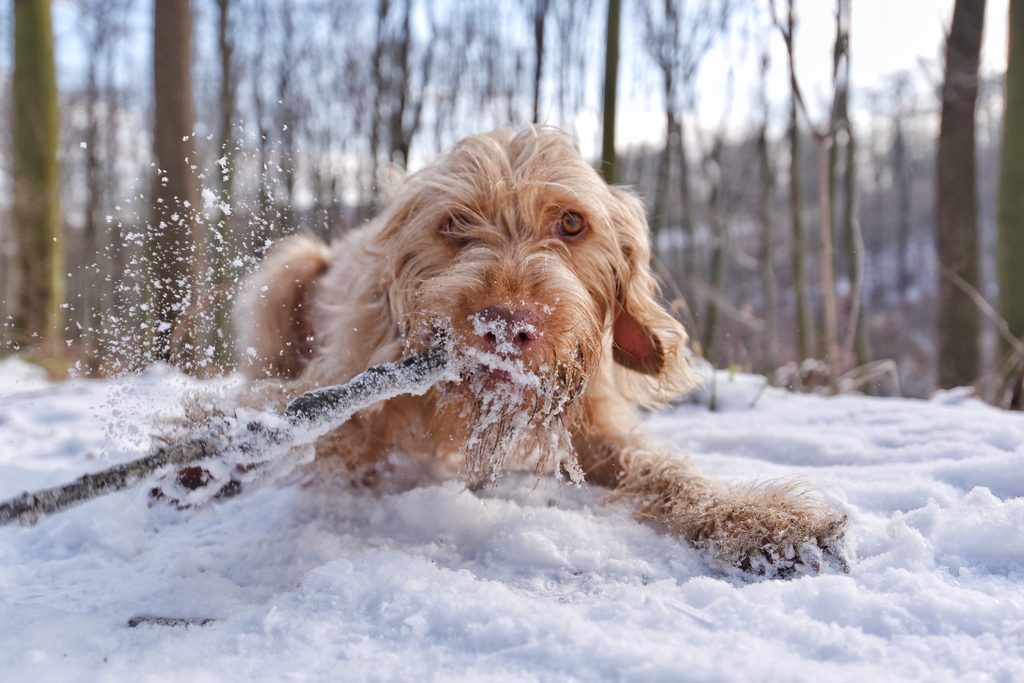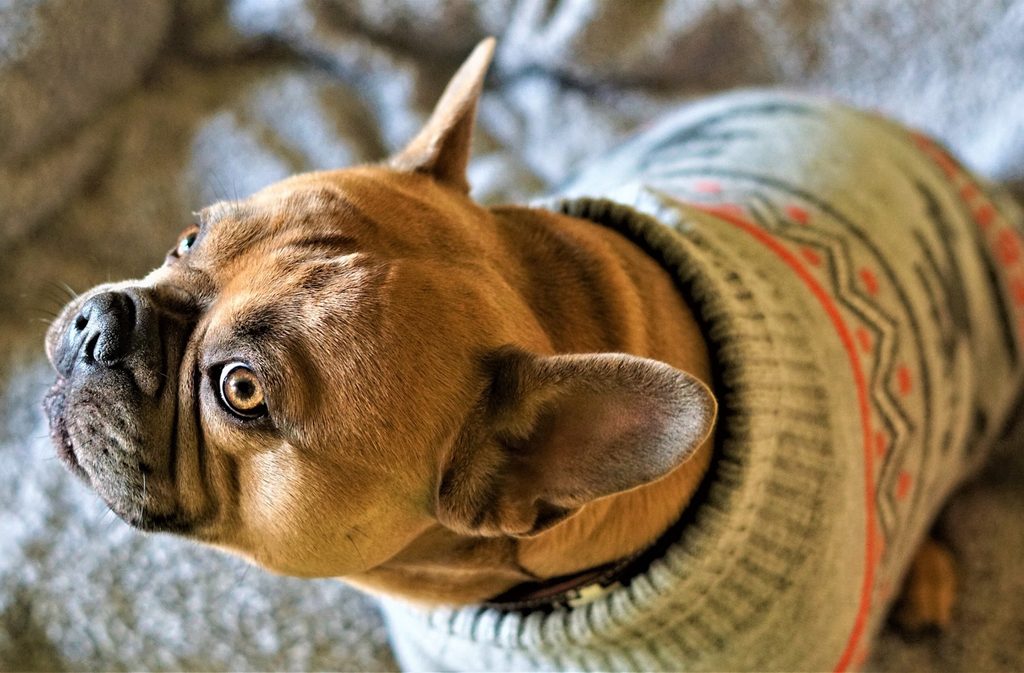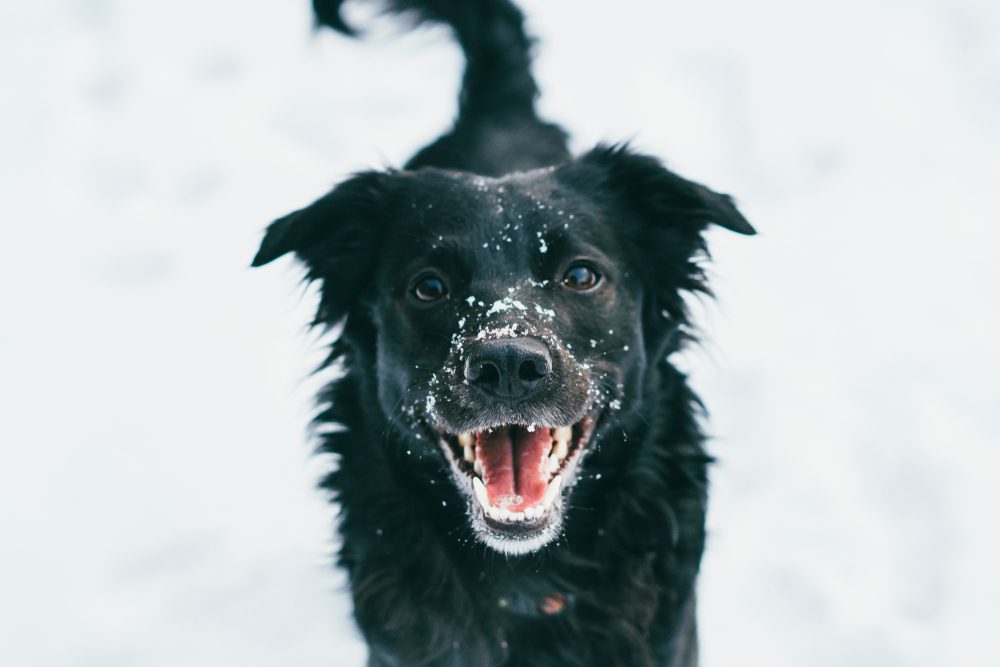Winter in much of the U.S. typically means freezing rain, snow, and ice. Although we love the tranquil beauty of waking up to a White Christmas, cozy sweaters, hot chocolate, and holiday meals, the winter months aren’t all fun and festivities. However, while hidden patches of black ice to power outages in subzero temperatures are dangerous, the weather isn’t the only part of winter that can be frightful.
Not only is it important for all pet parents to bundle up beloved fur babies in weatherproof boots and sweaters, but they should also be aware of another potential danger awaiting their dogs: ice melters. Some brands claim to make their ice melter pet-safe, but can they still harm dogs? Here’s everything you need to know about this potentially deadly chemical danger.

Why ice melters are dangerous to pets
Ice melters, also known as ice melts, are primarily composed of a variety of salts. Common ingredients include calcium chloride, magnesium chloride, potassium chloride, and sodium chloride. While ingestion of calcium chloride usually causes milder symptoms compared to other ice melt ingredients, it can still ulcerate your dog’s mouth and stomach.
In addition to being extremely painful, these ulcerations may cause your pooch to stop eating and drinking, leading to dehydration and malnutrition if left unchecked. Worse still, if your pup consumes potassium chloride, sodium chloride, or magnesium chloride, he may suffer from gastrointestinal distress, dehydration, electrolyte abnormalities, and more severe symptoms.

How to tell if your pup has eaten ice melts
The good news is that most dogs won’t eat ice melts deliberately. The bad news is that they might eat snow that’s been recently treated with ice melts, or they could potentially lick snow coated with ice melt from their paws. Unfortunately, ingesting too much salt is dangerous for your pooch. Symptoms range from mild symptoms, like irritated paws and skin, to more serious symptoms, such as extreme thirst, vomiting, diarrhea, and seizures.
In cases of severe salt poisoning, the consequences can even be fatal to your dog. If your dog exhibits any of these symptoms after playing outdoors in the snow, it’s vitally important to take him to the vet as soon as possible. Prompt treatment is more likely to yield a positive outcome for your pooch.

Keeping your dog safe from ice melts
Ice melts keep our sidewalks walkable, de-ice driveways, roads, and parking lots, and help reduce automotive accidents by 88% and reduce injuries by 85% — but at a cost. While ice melts are essential during the winter months, they’re also extremely dangerous to pets. Thankfully, there are a few things you can do to help keep your beloved pup safer during the winter.

Use a pet-safe ice melt
Using a pet-safe ice melt can reduce the risk of severe symptoms in your pup, but you’ll still need to take precautions. No pet-safe ice melt is entirely safe for your dog to ingest, and prolonged contact should be avoided to prevent chemical burns. According to Dr. Sarah Gorman, an associate veterinarian at Boston Animal Hospital, “The ASPCA’s Animal Poison Control Center classifies all ice melt products as being chemical irritants that can cause gastrointestinal signs, like vomiting and diarrhea, and topical irritation to the paw pads and skin. Prolonged exposure to the skin for any of these compounds can cause chemical burns.”
Consider natural alternatives
The pet experts at Small Door Veterinary recommend using sand, dirt, or wood ash as suitable alternatives to chemical ice melts. Small Door Veterinary’s vets echo Dr. Gorman’s sentiments, stating, “These compounds can cause irritation or even chemical burns on your pet’s paw pads, and can also cause gastrointestinal issues if ingested — which may well occur, since your pet is likely to lick their paws clean after walking outside.” If you’re concerned about exposing your pup to chemical ice melts, sprinkle sand on your driveway and walk your dog closer to home.
Invest in a good pair of winter boots
Even if you’ve treated your driveway and sidewalks with natural alternatives to ice melts, outfitting your dog in a good pair of boots also protects his paws from the cold. Just like us, our dogs can suffer from dry, chapped winter skin. Additionally, a combination of snow, ice, and gritty sand can become wedged between their toes, leading to painful abrasions and increasing the risk of frostbite. A high-quality pair of winter boots will allow you to take your dog for a walk without fear of frostbite or ice melts. Just make sure you remove your dog’s boots once you’re inside, and never let your pup lick his footwear.

We often associate good food, family gatherings, and cozy clothes with the winter months. However, pet parents should be aware of the dangers lurking right outside their front door. While the use of ice melts helps keep us safe, these essential compounds can be dangerous, even lethal, to our pets. Consider natural alternatives, get your dog a good pair of boots, and never let him lick his feet or eat snow while you’re out for a walk.



